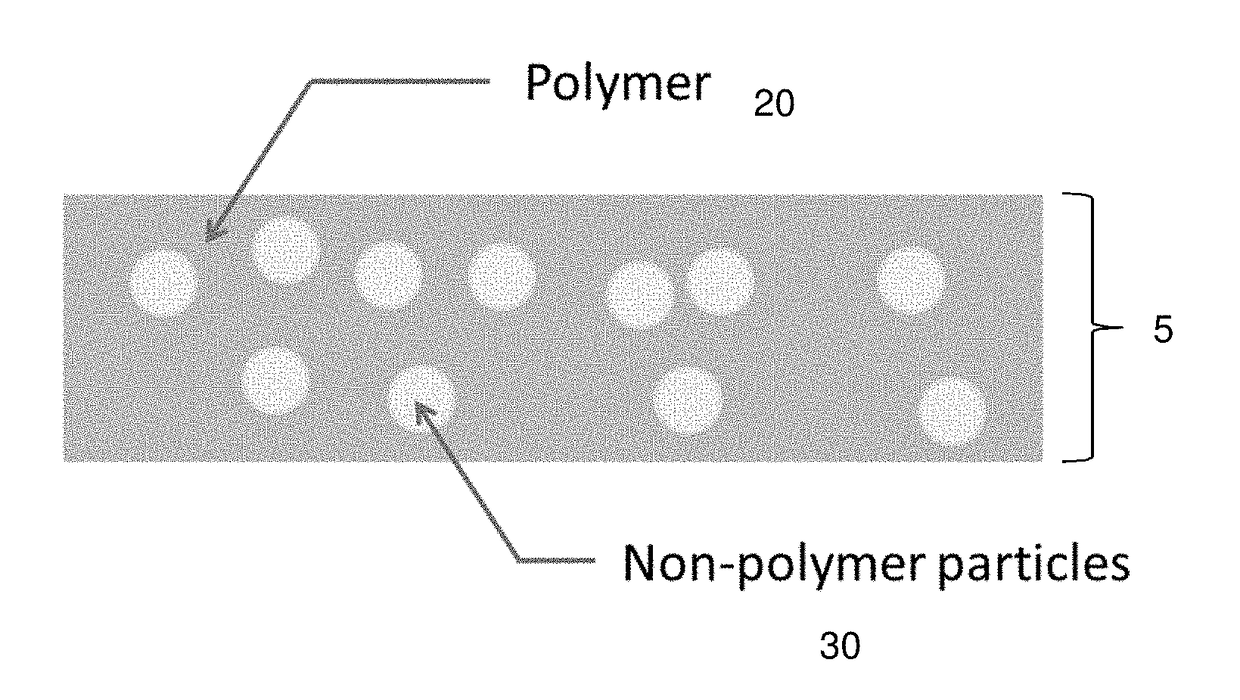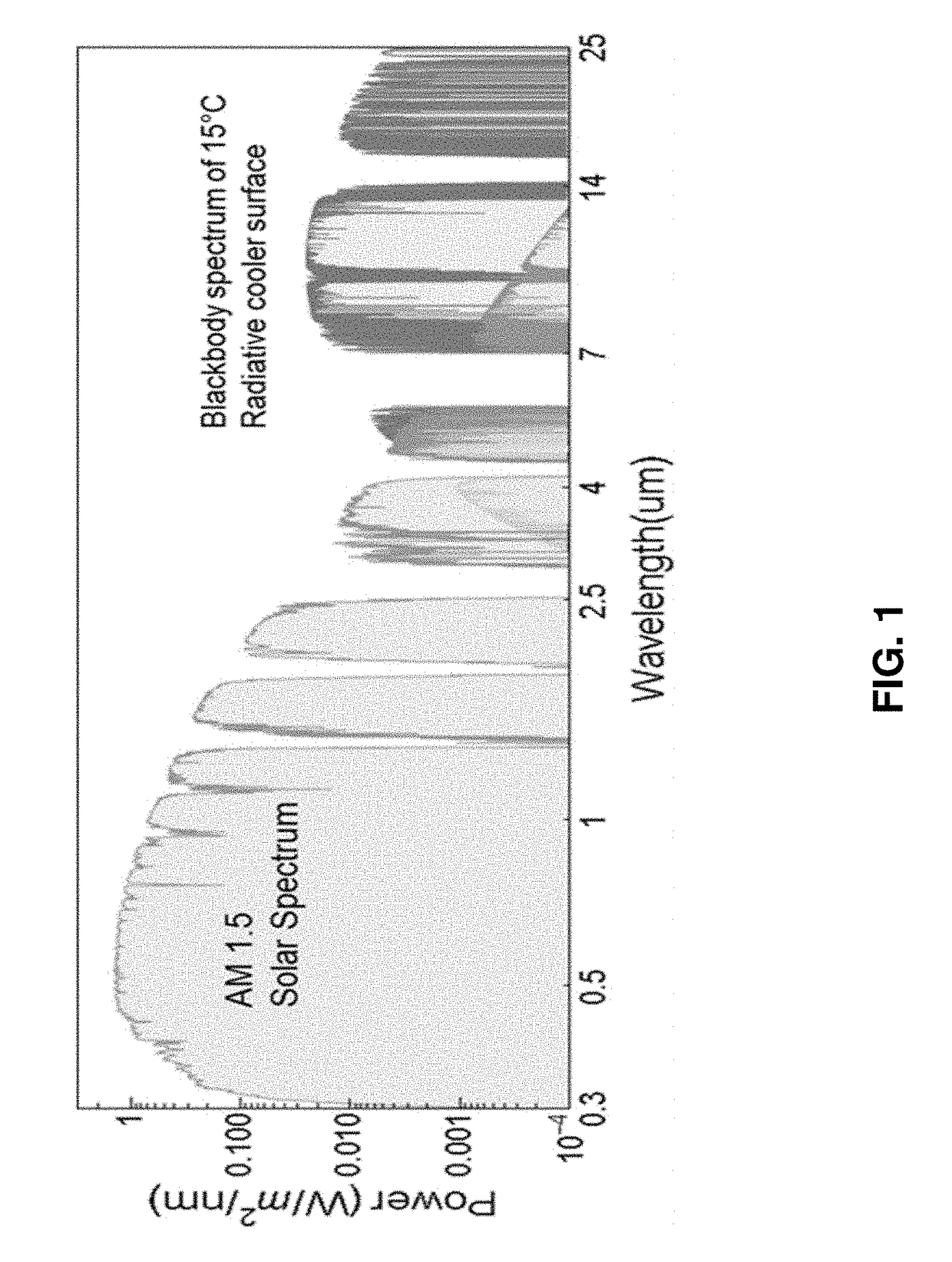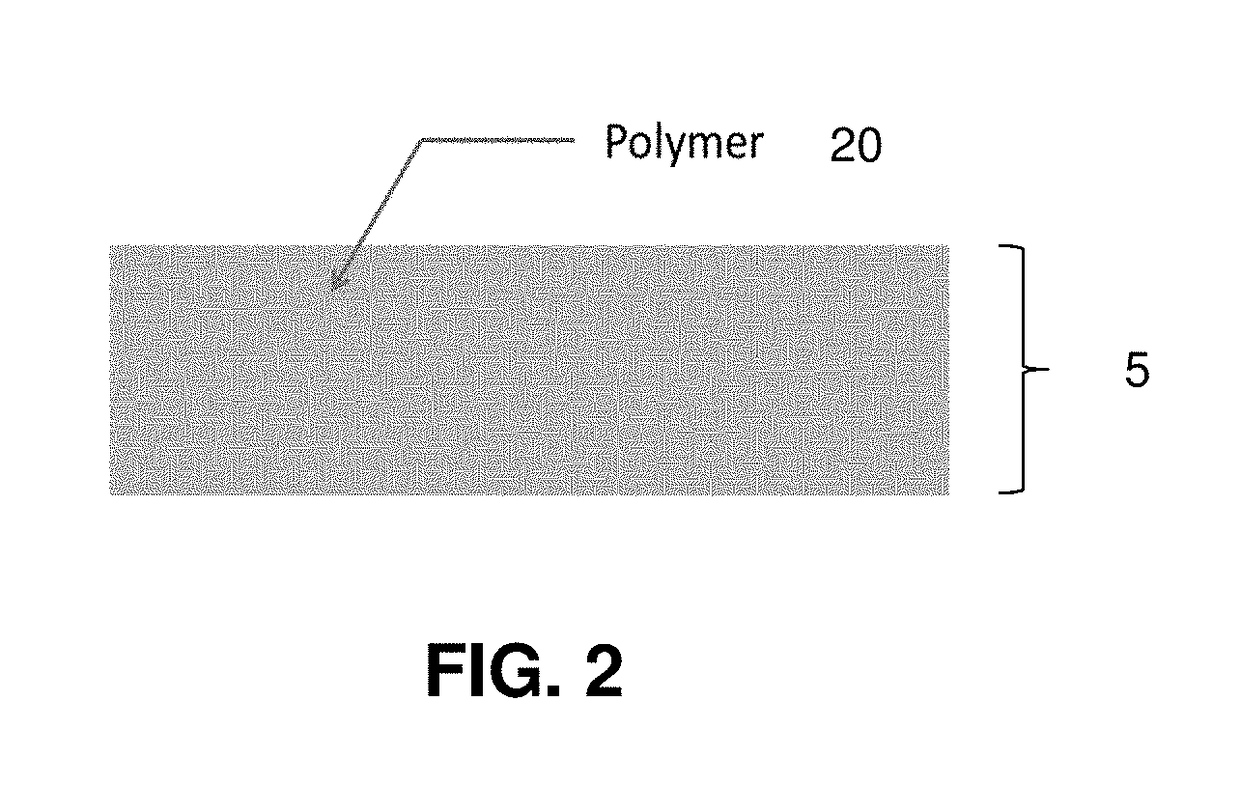Radiative cooling structures and systems
a cooling structure and radiation technology, applied in the field of radiation cooling structures and systems, can solve the problems of large power density mismatch between, and achieve the effects of convenient production and integration, improved efficiency, and improved efficiency
- Summary
- Abstract
- Description
- Claims
- Application Information
AI Technical Summary
Benefits of technology
Problems solved by technology
Method used
Image
Examples
example
Polymethylpentene-Based Radiative Cooling Films
[0095]FIG. 13A shows the emissivity / absorptivity as a function of wavelength for a 50-μm-thick bare polymethylpentene (TPX™) films and a 50 μm thick film with 5% 8-μm-diameter solid silica microspheres. The trace for the TPX™ film is lighter gray than the trace for the composite film. Polymethylpentene is index-matched with silica in the solar spectrum, but not in the infrared spectrum. The polymethylpentene film with silica microspheres significantly reduces the solar absorption but maintains a high emissivity at IR wavelengths of 7-13 μm. Without wishing to be bound by any particular belief, the silica spheres are believed to act as infrared scatterers and resonantly interact with infrared radiation, contributing to improved emissivity of the films.
[0096]FIG. 13B shows the emissivity / absorptivity as a function of wavelength for polymethylpentene films of different thickness with 5% 8-μm-diameter solid silica microspheres. (key: 50 μm ...
PUM
| Property | Measurement | Unit |
|---|---|---|
| size | aaaaa | aaaaa |
| wavelength | aaaaa | aaaaa |
| emissivity | aaaaa | aaaaa |
Abstract
Description
Claims
Application Information
 Login to View More
Login to View More - R&D
- Intellectual Property
- Life Sciences
- Materials
- Tech Scout
- Unparalleled Data Quality
- Higher Quality Content
- 60% Fewer Hallucinations
Browse by: Latest US Patents, China's latest patents, Technical Efficacy Thesaurus, Application Domain, Technology Topic, Popular Technical Reports.
© 2025 PatSnap. All rights reserved.Legal|Privacy policy|Modern Slavery Act Transparency Statement|Sitemap|About US| Contact US: help@patsnap.com



